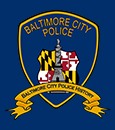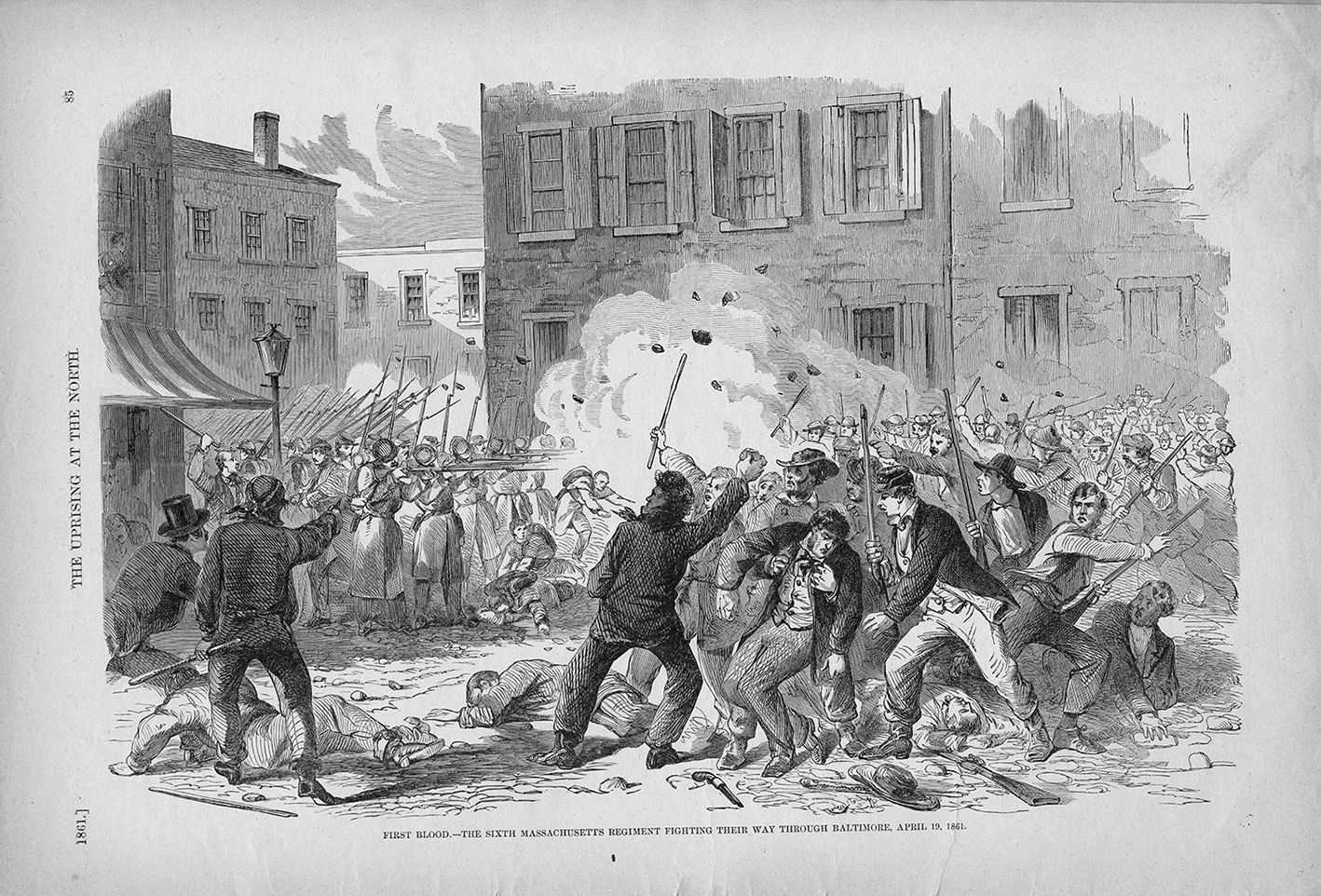Fun Facts
A list of known firsts that occurred right here in Baltimore.
Baltimore Fun Facts
Historical Trivia
A City of Many Firsts

1773 - First Newspaper, the Maryland Journal and Baltimore Advertiser, established by William Goddard; first issue 20 Aug 1773
1773 - First US Stage Coach route - It went from Baltimore to Philadelphia
1774 - The First Post Office was built in Baltimore in 1774. It was the precursor to the modern Postal Service we see today
1776 - 20 December 1776 - As British troops closed in on Philadelphia at the end of 1776, the Continental Congress decided to abandon the city and flee south to the safe haven of Baltimore. Delegates convened on December 20, 1776, inside the spacious house and tavern of Henry Fite. Click HERE
1778 - First independent corps in the Revolutionary War Army- organized by Count Casimir Pulaski
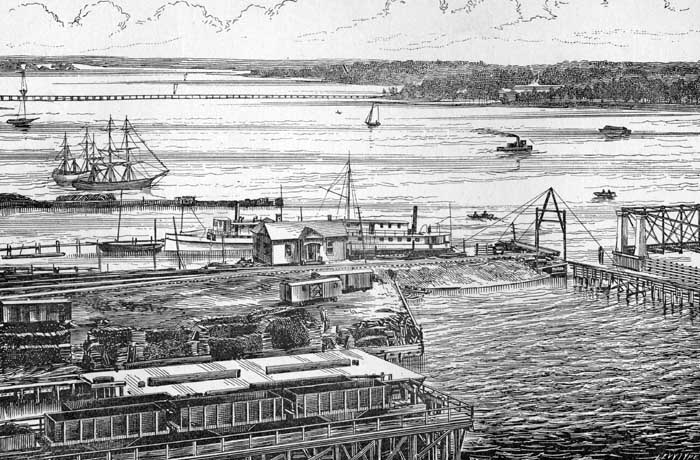
![]()
1783 - First dredger in the world - the Baltimore Mud Machine, was invented by Andrew and John Ellicot.
1784 - The First successful Manned balloon launch in the United States was launched from Baltimore and was operated by 13-year-old Edward Warren.
1784 - Baltimore would obtain Street Lights by order of the Police Department
1784 - First Methodist Church in America- Lovely Lane Meeting House
1785 - First General meeting of the Quakers
1785 - First Church of the United Brethren
1789 - First Catholic diocese in the U.S.
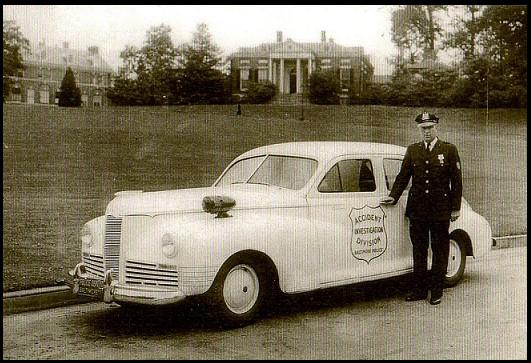
![]()
1790 - Due to its shipbuilding years and the Clipper (a warship) being first built in Baltimore, Baltimore had a nickname of The Clipper City. The "Skipjack" was also first built in Baltimore, but is a fishing boat and not used for war. The USS Constellation was used after the War of 1812 to hunt and capture slave trading ships, which it did very successfully. It is now docked in Baltimore's Inner Harbor at Pier One and can be toured by the public.
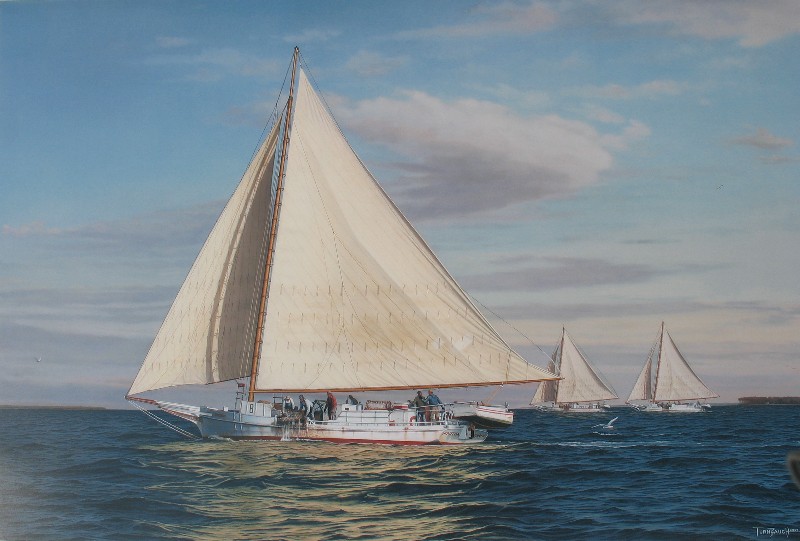
![]()
1791 - First Roman Catholic seminary in the U.S. St. Mary's Seminary
1792 - The first Monument to Columbus in the United States
1792 - First water company chartered in the United States - Baltimore Water Company.
1796 - First Sunday newspaper in America- Monitor

![]()
1796 - First sugar refinery in the U.S. - Domino Sugar - founded by Garts and Leypoldt
![]()
1797 - First US War Ship to capture an enemy vessel - Constellation
1798 - First fort built by U.S. Government – Fort McHenry
1799 - First Swedenborgian church - erected at Exeter and Baltimore Street
1800 - First investment banking house in America- founded by Alexander Brown
1803 - First electric refrigerator- invented by Thomas Moore
1804 - First stationary store- Lucas Brothers
1805 - Courthouse built in 1805 occupied in 1809 torn down to make room for present marble structure
1811 - First U.S. Company to import and consumer package teas – Martin Gillet and Company
1813 - The Star Spangled Banner (Fort McHenry's flag, not the Nation's song) was sewn in Baltimore by Mary Young Pickersgill. Pieces of the flag can be seen in Baltimore at the Star Spangled Banner National Historic Landmark, but the entire flag can be seen at the Smithsonian’s American History Museum in Washington, D.C. *1
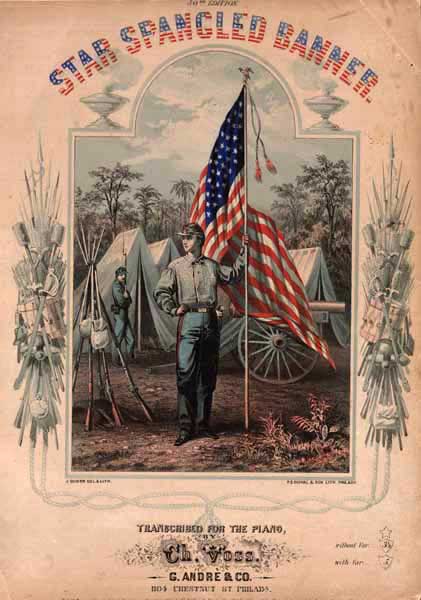
![]()
1814 - Birthplace of the Star Spangled Banner - written by Francis Scott Key at Fort McHenry
1814 -The Star-Spangled Banner First printed in the Baltimore American and the Daily Advertiser 21 Sep after the 12/13 Sept 1814 bombardment on Ft McHenry by the British fleet

![]()
1815 - First manufacturers of silverware in the United States - Samuel Kirk Company
1815 - Cornerstone of Washington Monument laid 4 July 1815 it would be completed 25 Nov 1824 and was the first monument erected for George Washington in the country. *2
![]()
1816 - First city to illuminate streets with hydrogen gas (Ran by the Baltimore Police to reduce crime)
1817 - First independent Unitarian Church- formed at 21 Hanover Street, home of Henry Payson
1817 - First annual conference of the African Methodist Episcopal Church
1819 - First Odd Fellows lodge in the U.S.- organized by Thomas Wildey and others
1819 - First gaslight company in the country- Gas Light Company of Baltimore
1820 - First canning of oysters- by Thomas Kennett
1828 - Shot-Tower (Phoenix Company) 234 feet high, circular, and of brick built without scaffolding: complete 25 Nov 1828 HERE

![]()
1828 - First American umbrella factory: William Beehler ( Beehler Umbrella Factory). William Beehler founded the nation's first umbrella factory in Baltimore in 1828. The company’s motto: “Born in Baltimore, raised everywhere.” It is said that it was at Beehlers that the first Umbrella was opened in the United States. The first umbrella factory in the United States was indeed established in Baltimore. In 1828, a German immigrant by the name of Francis Beehler founded it. The Beehler Umbrella Factory was known for its catchy slogan "Born in Baltimore, Raised Everywhere". Legend has it that the first umbrella raised in the United States was opened in Baltimore in 1772.
The Birthplace of American Umbrella Manufacturing
Baltimore, Maryland, holds a unique place in the history of the United States as the birthplace of the country's umbrella manufacturing industry. This article explores the city's pioneering role in this industry, the introduction of nylon in umbrella manufacturing, and the scale of umbrella production in Baltimore's heyday.
The Dawn of Umbrella Manufacturing
A German immigrant named Francis Beehler founded the first umbrella factory in the United States in Baltimore in 1828. This marked the beginning of an industry that would flourish in the city for many years to come.
Beehler's success inspired numerous imitators, leading to a boom in the local umbrella manufacturing industry. By the turn of the 20th century, Baltimore had become the national capital of umbrella and rainwear manufacturing.
The Introduction of Nylon
The umbrella manufacturing process underwent a significant change with the introduction of nylon. This synthetic material, which is lightweight and waterproof, replaced traditional fabrics used in umbrella canopies.
The use of nylon not only improved the durability and performance of umbrellas but also allowed for greater variety in design. By the late 1920s, chemists at Polan Katz & Co., one of the leading umbrella manufacturers in Baltimore, had figured out how to dye umbrella fabric so the colors would not run in the rain.
Umbrella Production in Baltimore
At its peak, Baltimore was manufacturing around 2 million umbrellas each year. These umbrellas, produced from a variety of fabrics and often featuring finely crafted handles, were shipped out from Baltimore to destinations across the country and beyond.
Conclusion
Baltimore's role as the birthplace of American umbrella manufacturing is a testament to the city's industrial heritage. The introduction of nylon into the manufacturing process marked a significant advancement in the industry, leading to improvements in both the quality and variety of umbrellas. Despite the decline of umbrella manufacturing in Baltimore, the city's contribution to this industry remains a significant part of its history.
Source: Conversation with Bing, 3/23/2024 - Information was provided by an AI developed by OpenAI.
1828/29 - Baltimore was the birthplace of the American Railroad. In 1828/29, the B&O Railroad (Baltimore & Ohio) was built, serving as the country’s first commercial railroad and long-distance track, with the nation’s first passenger station as well. This advancement lay the foundation for American commercial and geographic expansion. Today, visitors can experience the evolution of America’s unique railway system at the B&O Railroad Museum, an affiliate of the Smithsonian.
1829 - First Black Catholic religious order of nuns- Oblate Sisters of Providence
1830 - First coal-burning steam locomotive built - Tom Thumb
1830 - First operating railroad station/depot in the US - Mt. Clare Station
1831 - First national nominating convention for President of the United States
1836 - First regular steam vessel to cross the Atlantic from the U.S - "City of Kingston"
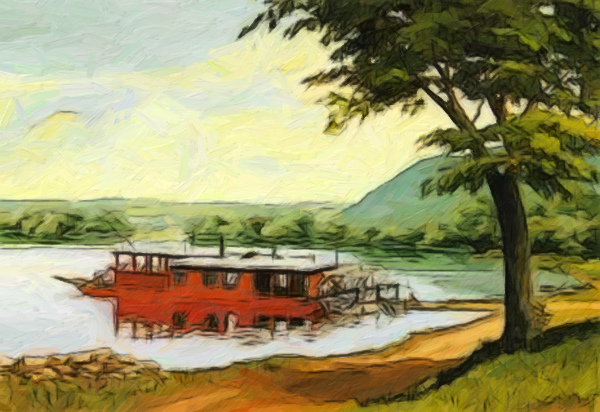
![]()
1836 - First Car Ferry used in the U.S. was built in Baltimore for the Susquehanna River
1837 - 17 May 1837, the first issue of the Baltimore Sun is printed - The first article in the Baltimore Sun that references our police is titled Rioting and as we would expect it is a negative report, that even when police explain the article was incorrect, the paper still runs the story. *3
1839 - First commercial canning of corn
1840 - First Dental College in the world- Baltimore College of Dental Surgery
1840 - First steam boating company in the U.S. - Baltimore Steam Packet Co.
1844 - First public supported high schools for girls - Eastern High School and Western High School
1844 - The First Telegraph line in the world was established between Washington, D.C., and Baltimore. sent from the Capitol building in D.C. to the Railroad Depot in Baltimore was a message that read, "What hath God wrought."
1848 - First Ice Cream Freezer - patented by W. G. Young
1849 - First teachers college for women - Baltimore Female College (Goucher College)
1849 - Edgar Allen Poe dies in Baltimore 7 Oct 1849 - He is buried at Westminster Hall and Burial Grounds
1850 - Snowballs—grandfather to slushie, snow cones, and shaved ice — were invented in here in Baltimore during the American Industrial Revolution. - The story goes, in the days of Ice-Boxes, and home ice delivery, when the ice truck delivered ice to houses, on those hot summer days the kids would run up to the ice truck, and the drivers would give them the ice chips from the blocks of ice. After a while mothers would start making flavors to turn this icy treat into even more of a treat for their kids. The most common flavor was "Egg Custard" made from eggs, sugar, and vanilla.
1853 - First Radial Heater for the home - at Mansion Alexandrinsky
1854 - First Jewish Community Center I the U.S. - (YMHA) Young Men's Hebrew Association
1856 - First Elevator to be operated by electrical power - invented by James Bates
1859 - First YMCA - Pratt and Schroeder Streets
1859 - First American horse-drawn streetcar line was done so in Fell's Point
![]()
1861 - Baltimore saw the First Battle and the First death of the Civil War in 1861 when residents with Southern sympathies engaged Union troops - HERE
1868 - The First black-owned shipyard in the United States is now an African American heritage site, the Frederick Douglass-Isaac Myers Maritime Park Museum
1869 - First black labor union - Colored Businessmen's Association, organized by Isacc Meyers
1869 - First candy factory to produce licorice - J.S. Young Company

![]()
1875 - The First monument to Edgar Allan Poe
1878 - First animal welfare association - American Humane Society
1879 - First synthetic sweetening agent - Saccharine, developed at Johns Hopkins University
1883 - First public financed vocational school in the U.S. - Baltimore Polytechnic Institute
1884 - First typesetting machine in the world - invented by Ottmar Mergenthaler
1885 - First commercial electric streetcar line - Baltimore to Hampden

![]()
1886 - First Public Library System with branches - Enoch Pratt Free Library
1890 - First steam tanker built in America The Maverick by W.T.Malster

![]()
1891 - First commercial stomach antacid seltzer - Bromo-Seltzer, made by Captain Isaac E. Emerson
1892 - First bottle caps with Crown Cork in the U.S.- Crown Cork and Seal

![]()
1892 - First Ouija Board - invented and patented by Isaac and William Fuld
1895 - First Catholic college for women - Notre Dame College
1895 - First electronic railway locomotive in the world - put in service by the B&O
1896 - First Multi-store shopping center building in the country - Roland Park Marketplace
1897 - First country day school in the U.S. - Gilman School
1897 - First practical submarine in the US - "Argonaut," invented by Simon Lake
1900 - First time Duck Pin Bowling introduced - at Diamond Bowling Alleys
1901 - First woman professor at a U.S. medical School - Dr. Florence Rena Sabin
1904 - First city magazine- Baltimore Magazine
1904 - 7 Dec 1904 - Fingerprint Identification Section - Baltimore Police Department becomes the first police agency in the country to use the new Fingerprint System of identification when on 26 November 1904 Sgt John Casey fingerprinted, John Randles to be held over on a theft charge. Fingerprint Identification was brought to Baltimore by Marshal Farnan, who after attending a seminar in St Louis himself on the subject, came back to Baltimore and sent Sgt. John A. Casey back to learn the system, and immediately put the technique into place, eventually taking the place of the Bertillon system. The department would go on to use 7 Dec 1904 as the inauguration date of the Finger Print system. others claim to be the first, but none of them have actual names and dates. This is recorded in the Baltimore Sun in 1904, 1905 and 1907 articles
1911 - First international women's volunteer organization - Hadassah, founded by Henrietta Szold
1911 - Lemon Stick - A lemon and a peppermint Stick, this tradition started at Baltimore's Flowermart sometime between its start and the present time, the soft peppermint sticks used made by Giambri's confections of Philidelphia, Giambri opened in 1915, so we know this treat would have begun sometime after that. But these days in Baltimore, there is hardly a fair, carnival or family get together that didn't make and serve Peppermint Lemon Sticks.
1915 - 7 April 1915 - Legendary American Jazz Singer and Songwriter “Eleanora Fagan” some called her "Lady Day", but she was better known as “Billie Holiday” and she was born in Baltimore. *4
1916 - First portable electric drill with pistol grip - Black & Decker
1916 - First municipal orchestra supported by public funds - Baltimore Symphony Orchestra


1917 - First gas station with pumps enabling a driver to see the amount of gasoline being pumped (Visible Pump) * 5
1920 - First factory to manufacture stainless steel - Rustless Iron & Steel Company
1921 - First National Guard Air Squadron started - Logan Field
1921 - First black musical on Broadway - written by Baltimorean Eubie Blake, Shuffle Along
1922 - First nationwide presidential radio broadcast - by President Warren G. Harding
1925 - First triple combination fireboat in service - operated by Baltimore City Fire Dept
1932 - First producer of Venetian blinds in the United States - Eastern Venetian Blind Company
1936 - First black newspaper chain- Afro-American Newspaper

![]()
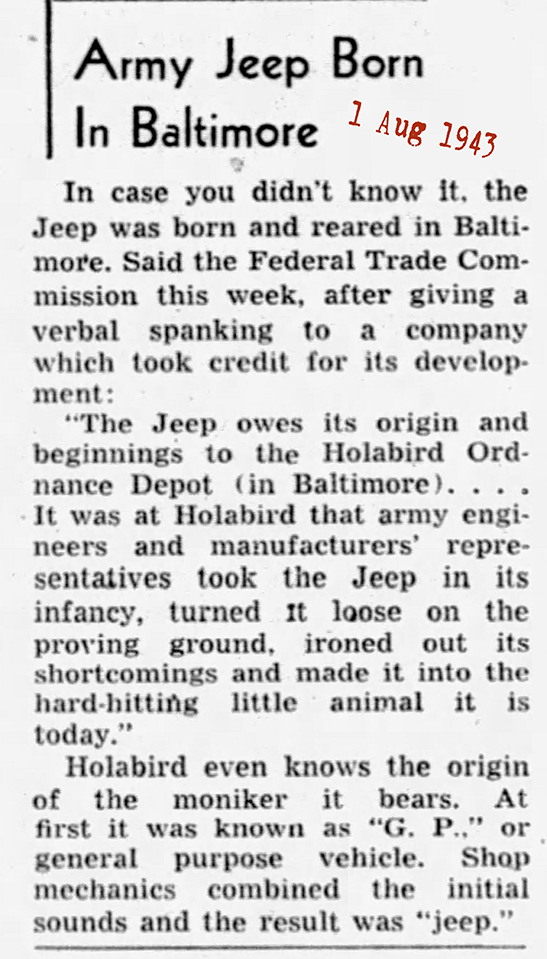
1946 - First photograph of earth from space - produced at Johns Hopkins Applied Physics Laboratory
1948 - First Strat-o-vision television telecast
1959 - First Mobile microwave television tower
1964 - First Permanent Building in the U.S to have a revolving restaurant - Holiday Inn, Downtown
1966 - First baseball player to be named MVP in both leagues - Frank Robinson
1967 - First African-American to serve on the US Supreme Court - Baltimorean Thurgood Marshall
1970 - 30 April 1979 - Baltimore Transit, becomes, MTA (Metropolitan Transit Authority) 
The Baltimore Sun
Thu 30 April 1970
1975 - First native-born U.S. Citizen to be canonized as a Saint - Elizabeth Seton (born 1809)
1983 - First African American wax museum - The National Great Blacks in Wax Museum
1995 - First American city to win a championship in the Canadian Football League - Baltimore Stallions
1996 - First city in the country to introduce a non-emergency 311 - 2 Oct 1996 Wednesday. On 1 March 1985, we put 911 into use
1997 - We went to a 10 Digit phone number system *6
*1 - Mary Pickersgill (born Mary Young; February 12, 1776 – October 4, 1857), was the maker of the Star Spangled Banner Flag hoisted over Fort McHenry during the Battle of Baltimore in the War of 1812. The daughter of another noted flag maker, Rebecca Young, Pickersgill learned her craft from her mother, and, in 1813, was commissioned by Major George Armistead to make a flag for Baltimore's Fort McHenry that was so large that the British would have no difficulty seeing it from a great distance. The flag was installed in August 1813, and, a year later, during the Battle of Baltimore, Francis Scott Key could see the flag while negotiating a prisoner exchange aboard a British vessel, and was inspired to pen the words that became the United States National Anthem.
Pickersgill, widowed at the age of 29, became successful enough in her flag making business, that, in 1820, she was able to buy the house that she had been renting in Baltimore, and later became active in addressing social issues, such as housing and employment for disadvantaged women. From 1828 to 1851, she was president of the Impartial Female Humane Society which had been founded in 1802 and incorporated in 1811 that helped impoverished families with school vouchers for children and employment for women. Under Pickersgill's leadership, this organization built a home for aged women in 1850-51 on West Lexington Street at Franklin Square and later added an Aged Mens' Home which was built adjacent. These, more than a century later, evolved into the Pickersgill Retirement Community of Towson, Maryland which opened in 1959. Pickersgill died in 1857 and was buried in the Loudon Park Cemetery off Frederick Road and Wilkens Avenue in southwest Baltimore, where her daughter erected a monument for her, and where some civic-minded organizations later erected a bronze plaque. The house where Pickersgill lived for 50 years, at the northwest corner of Albemarle and East Pratt (formerly seen) Streets in the Jonestown/Old Town neighborhood of eastern downtown Baltimore, along the eastern banks of the Jones Falls later became known as the Star Spangled Banner Flag House in 1927, through the efforts of many historically and preservationist-minded citizens which came out of the Centennial Celebrations during 1914. -
*2 - The glorification of George Washington began long before his death in December 1799, and the dedication of a memorial in his honor seemed certain. A monument honoring Washington in Baltimore was first proposed in 1809, and a committee was formed to commission and fund said monument. In 1811, Baltimore held the first of six lotteries, authorized by the Maryland General Assembly, eventually raising enough funds to construct a Washington Monument in Baltimore. Robert Mills's design was chosen in an architectural competition in 1815, and the cornerstone laid on July 4 of that year, As a side note Robert Mills also designed the more famous Washington Monument in the District of Columbia but it was not completed until 1885. A brief history on that is as follows Construction of the monument began in 1848, was halted from 1854 to 1877, and finally completed in 1884. The hiatus in construction happened because of co-option by the "Know Nothing party", a "lack of funds", and the intervention of the "American Civil War". Two of which make interesting reading, the, Know Nothing Party, and of course the American Civil War. A difference in shading of the marble is visible approximately 150 feet or 27% up, shows where construction was halted. During the stop and start of construction, Rober Mills' design was modified significantly. -
*3 - Baltimore Sun article June 8, 1837 - Rioting – The peaceable and orderly part of our citizens will have to set their faces against all public celebrations, Upon almost every occasion where a crowd is drawn together, we are sure to be treated with a fight or riot. On Monday, whilst the military of the city were ranged in a line in front of our office, our attention was aroused by a loud outcry, and a moment afterward a man in citizen’s dress was seen rushing through the ranks with a pistol in his hand, threatening everyone in his way. No police appeared, and the duty of arresting him devolved we believe upon a musician of one of the companies who is also a police officer. In another part of the crowd we understood there was another fracas and Bowie knives and pistols gleamed amongst the course of the same day, a person was knocked down and very seriously injured in Monument Street and was obligated to take refuge in the store of a respectable gentleman who probably saved his life by arming his household and threatening to shoot any man who should dare to cross his threshold.
The truth is our police department is totally useless. Rioters laugh at it. The citizens have no confidence in it. There are some good lieutenants of the watch – and perhaps, one or two bailiffs who are willing to do their duty – but as for the rest; they are rather of the mob than against them. The City would be just as well without them. Our Mayor would do his duty, always, but his great age prevents him from personal interference and supervision, and his subordinate officers have an interest in concealing from him the irregularities which they are unable or unwilling to suppress or prevent. – Chronicle
It is almost impossible to arrive at any correct information on this subject. Since the above was in type, we have been called upon by two lieutenants of the watch, who state that they were present at the commencement of the disgraceful scene, and immediately arrested the ringleaders and took them before a magistrate. On the other hand, we are told by persons who were present that the violators of the laws were not arrested until the fight was quite nearly over. Such is the contradictory statements of the case, that we are unable to decide which is correct. One thing is very certain that there were not one fourth part officers enough belonging to the police keep down the present riotous disposition. Something should be done, and that quickly, before any lives are sacrificed. A pretty state of things is this, for a magistrate after hearing the charge against a set of lawless rioters, instead of committing them, to send home under the protection of a posse of police officers.
The Article that inspired this article was as follows:
A Disgrace Riot Jun 1837
A Distasteful riot –we are informed that a most brutal fight took place yesterday afternoon, on the corner of Gay and Baltimore Streets between some persons who called themselves firemen. We hope for the credit of this body of our citizens the report is not true. The fight lasted some time, and a pistol was snapped within a few inches of the head of one of the belligerent party, which misfired, when the wretch having it, turned the weapon and struck his antagonistic to the ground, who was taking up as dead; whether he was brought to again we did not learn. No police, as a matter of course, interfered to quell the riot. -
*4 - Billie Holiday, the jazz singer, was born in Baltimore. Her vocal style, strongly inspired by jazz instrumentalists, pioneered a new way of manipulating phrasing and tempo. A monument in her honor stands on the corner of Lafayette and Pennsylvania Avenues. -
*5 - Black & Decker - Baltimore, Maryland - It is not known if this company ever made a gas pump, but they were issued a design patent for a curb pump in 1917. and then there's The Monarch Engineering & Manufacturing Company - Baltimore, Maryland - Between 1917 and 1918, Monarch made a gas pump, but no pictures are available. -
*6 1997 – 1 May 1997 we went to a 10 digit phone number system – just a few generation earlier we changed from a letter exchange in which we used numbers and letters such as Rogers 4 and Lexington 9 from this we went to a 7 digit numbers system, but with a large umber of phones, added to the number of ax numbers , and computer modems, causing some households to have 3 and 4 phone numbers, one for their family number, one for their family business, another for their fax machine and still one more for their internet modem. Having this going on in even 1 and 3 houses in a neighborhood, was a huge pop of 12 numbers for 12 houses to 20 number for 12 houses, and when we consider most neighbors have 300 houses or more we have to realize a neighbor of 300 house that has an extra phone line per house, has an extra 100 lines so instead of 300 it is now 400. And we have thousands of houses, apartments, businesses etc., increased right quickly by 1/3. So, we add an area code, where we used to just use 301, we add 410 and we have to dial the number and the area code. This area code alone doubles the number of lines we can have. Years later we introduce the cell phone, and yet another area code. While many houses dropped landlines, they increased the number of phones per household, it is not unheard of for a family to each have their own phone, and therefore phone number. This may sound like a rush that might be hard to keep up with, but there is one number I forgot to mention back in the days of Fax machines, and modems, and that was the pager, most families had a pager for dad, a pager for mom and you got it pagers for the kids. I had pagers for my kids, I handled them like streetlights when I was a kid, of course, my kids had to come in when the street lights came on, but if I needed them sooner, I hit them up on the pager and they were on their way. Anyway, this explains why on Thursday 1 May 1997 we went from dialing 7 digits to dialing 10 digits to hit our loved ones up or to make a business of some sort.
Donations
Donations help with web hosting, stamps and materials and the cost of keeping the website online. Thank you so much for helping BCPH.
![]()
POLICE INFORMATION
If you have copies of: your Baltimore Police Department Class Photo, Pictures of our Officers, Vehicles, Equipment, Newspaper Articles relating to our department and or officers, Old Departmental Newsletters, Lookouts, Wanted Posters, and or Brochures. Information on Deceased Officers and anything that may help Preserve the History and Proud Traditions of this agency. Please contact Retired Detective Kenny Driscoll.

NOTICE
How to Dispose of Old Police Items
Please contact Det. Ret. Kenny Driscoll if you have any pictures of you or your family members and wish them remembered here on this tribute site to Honor the fine men and women who have served with Honor and Distinction at the Baltimore Police Department. Anyone with information, photographs, memorabilia, or other "Baltimore City Police" items can contact Ret. Det. Kenny Driscoll at
Copyright © 2002 Baltimore City Police History - Ret Det Kenny Driscoll
